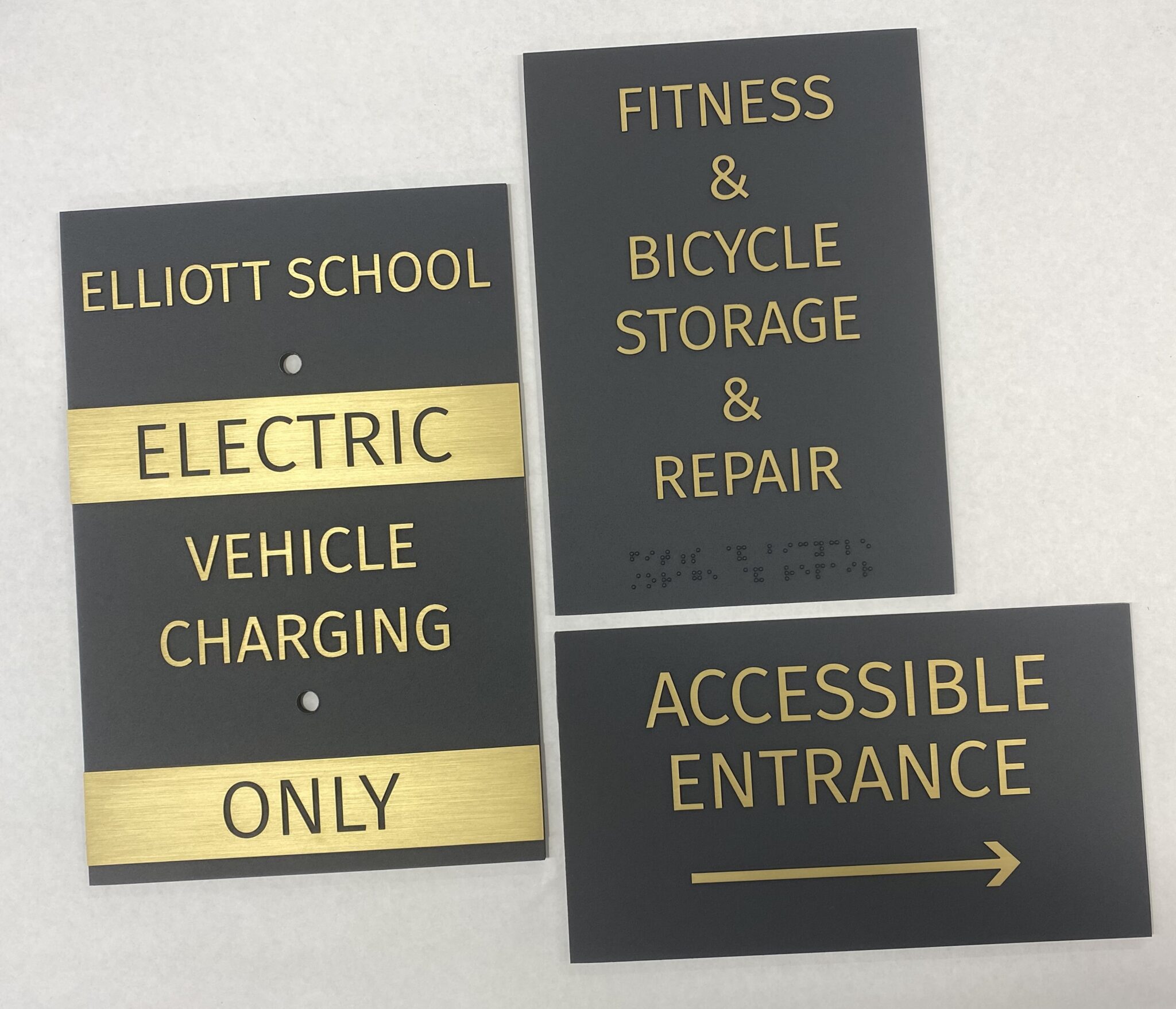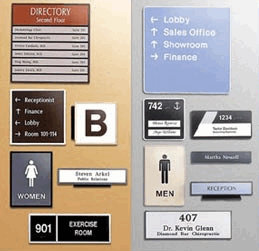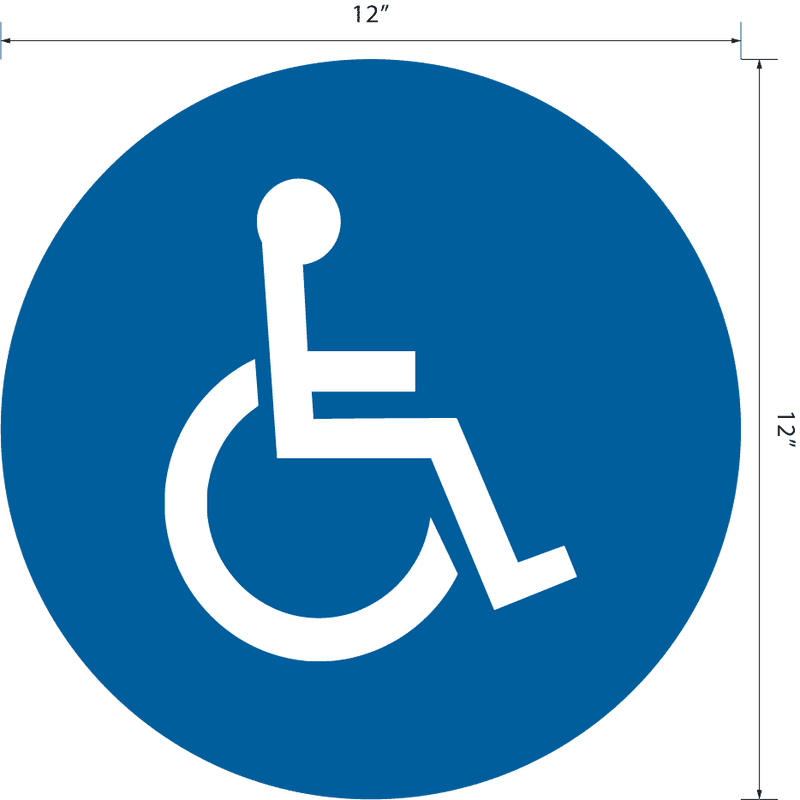Just How ADA Signs Improve Access for Everyone
Discovering the Key Functions of ADA Signs for Boosted Access
In the world of availability, ADA indicators function as silent yet effective allies, making certain that rooms are navigable and comprehensive for individuals with impairments. By incorporating Braille and tactile elements, these signs break obstacles for the aesthetically damaged, while high-contrast color pattern and legible fonts provide to varied aesthetic requirements. Their tactical positioning is not arbitrary yet rather a calculated initiative to assist in seamless navigating. Past these functions lies a much deeper narrative regarding the development of inclusivity and the continuous commitment to producing fair areas. What a lot more could these indications signify in our search of universal accessibility?
Importance of ADA Compliance
Guaranteeing conformity with the Americans with Disabilities Act (ADA) is vital for cultivating inclusivity and equal accessibility in public spaces and work environments. The ADA, enacted in 1990, mandates that all public centers, companies, and transportation services fit individuals with disabilities, ensuring they take pleasure in the very same rights and opportunities as others. Conformity with ADA criteria not just fulfills legal obligations but also improves an organization's track record by showing its commitment to diversity and inclusivity.
One of the key aspects of ADA conformity is the implementation of available signage. ADA indications are developed to make certain that people with impairments can easily navigate through rooms and buildings.
Furthermore, adhering to ADA guidelines can alleviate the threat of prospective fines and lawful consequences. Organizations that fail to abide by ADA standards might deal with penalties or claims, which can be both destructive and economically challenging to their public picture. Thus, ADA conformity is indispensable to promoting an equitable environment for everybody.
Braille and Tactile Aspects
The unification of Braille and responsive elements into ADA signs symbolizes the concepts of availability and inclusivity. These attributes are essential for individuals who are blind or aesthetically impaired, enabling them to browse public rooms with higher freedom and confidence. Braille, a responsive writing system, is important in supplying written information in a style that can be conveniently perceived with touch. It is typically put under the equivalent message on signs to ensure that individuals can access the details without visual help.
Tactile elements prolong beyond Braille and consist of increased characters and icons. These elements are developed to be discernible by touch, permitting people to identify room numbers, toilets, exits, and various other important locations. The ADA establishes particular standards pertaining to the size, spacing, and placement of these responsive aspects to optimize readability and make sure consistency across different environments.

High-Contrast Shade Plans
High-contrast color design play a critical role in enhancing the visibility and readability of ADA signage for people with visual disabilities. These plans are essential as they optimize the distinction in light reflectance between message and background, making sure that signs are easily noticeable, also from a range. The Americans with Disabilities Act (ADA) mandates using certain shade contrasts to accommodate those with restricted vision, making it an essential element of compliance.
The effectiveness of high-contrast colors hinges on their ability to stand apart in different illumination problems, including poorly lit atmospheres and locations with glow. Usually, dark message on a light background or light text on a dark history is used to accomplish ideal contrast. Black text on a white or yellow history offers a raw aesthetic distinction that aids in fast acknowledgment and comprehension.

Legible Fonts and Text Size
When considering the layout of ADA signs, the selection of readable font styles and suitable message size can not be overemphasized. The Americans with Disabilities Act (ADA) mandates that typefaces have to be not italic and sans-serif, oblique, manuscript, very ornamental, or of uncommon form.
According to ADA guidelines, the minimal message height need to be 5/8 inch, and it must increase proportionally with seeing distance. Uniformity in text dimension contributes to a natural visual experience, assisting people in browsing atmospheres successfully.
Additionally, spacing between lines and letters is essential to legibility. Appropriate spacing stops characters from showing up crowded, boosting readability. By adhering to these requirements, designers can considerably improve ease of access, ensuring that signs offers its designated function for all individuals, no matter their visual capabilities.
Efficient Positioning Methods
Strategic placement of ADA signs is essential for making the most of access and guaranteeing conformity with legal criteria. Properly positioned signs guide individuals with impairments effectively, assisting in navigating in public areas. Trick factors to consider include proximity, exposure, and height. ADA guidelines specify that signs need to be installed at an elevation between 48 to 60 inches from the ground to guarantee they are within the line of sight for both standing and seated individuals. This common elevation array is important for inclusivity, making it possible for mobility over at this website device customers and individuals of differing elevations to accessibility info effortlessly.
Furthermore, indicators should be positioned surrounding to the latch side of doors to permit very easy identification before entrance. Consistency in indication placement throughout a center boosts predictability, reducing complication and boosting total individual experience.

Verdict
ADA indicators play a vital duty in advertising availability by incorporating attributes that deal with the needs of individuals with handicaps. Incorporating Braille and tactile aspects makes sure essential information is obtainable to the visually impaired, while high-contrast color pattern and readable sans-serif font styles improve visibility throughout various lighting problems. Reliable positioning methods, such as suitable installing elevations and strategic locations, further find more info assist in navigating. These aspects collectively foster an inclusive setting, emphasizing the importance of ADA compliance in guaranteeing equal gain access to for all.
In the realm of access, ADA indications offer as silent yet powerful allies, guaranteeing that spaces are comprehensive and navigable for people with disabilities. The ADA, passed in 1990, mandates that all public facilities, companies, and transportation solutions suit people with handicaps, guaranteeing they delight in the same rights and opportunities as others. ADA Signs. ADA indications are designed to make certain that individuals with specials needs can quickly browse via buildings and spaces. ADA standards specify that indicators ought to be mounted at a height in between 48 to 60 inches from the ground to guarantee they are within the line of sight for both standing and seated individuals.ADA indications play a vital role in advertising accessibility by incorporating features that address the requirements of individuals with impairments